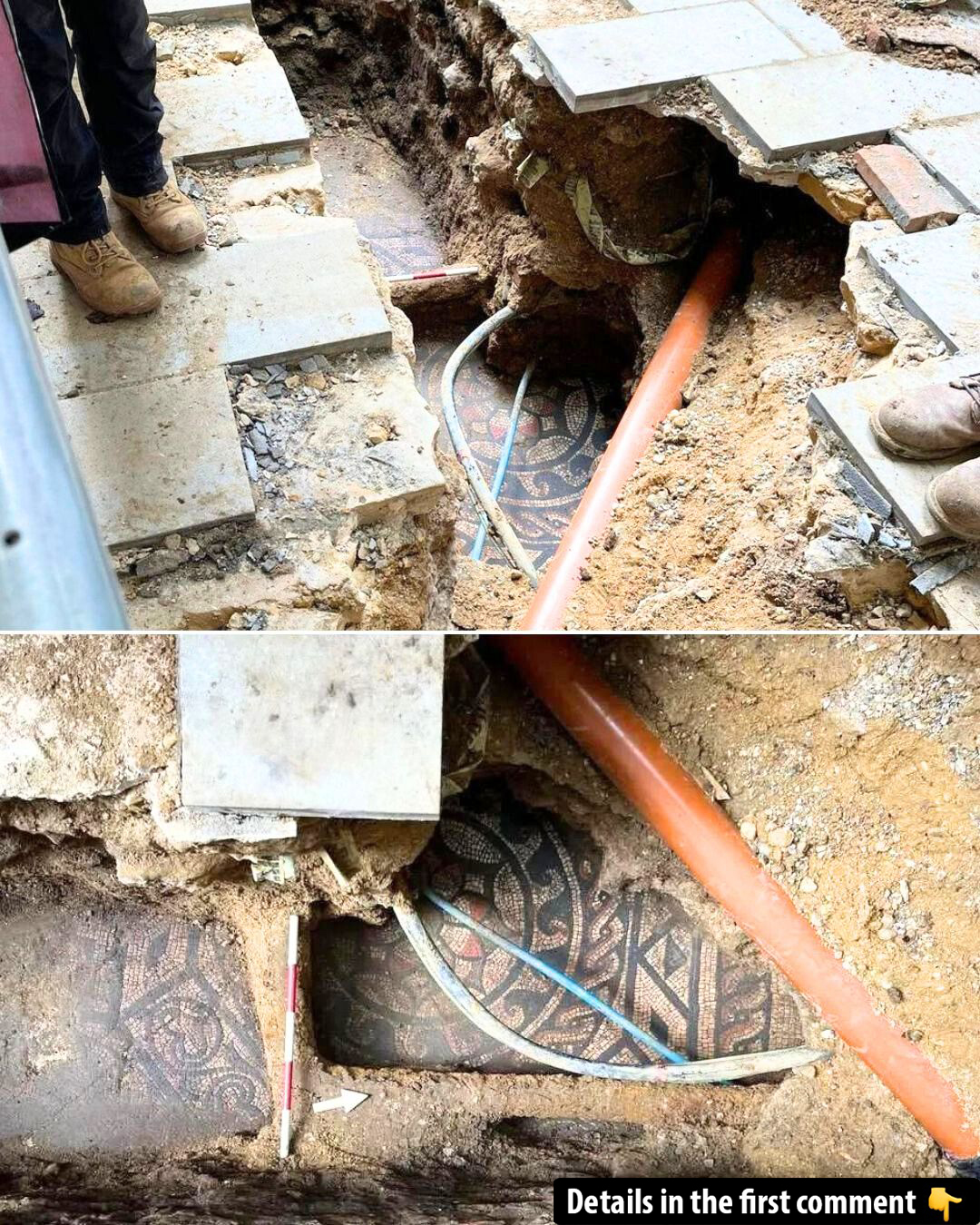In the heart of Colchester, England, a nearly 2,000-year-old treasure has been hidden underfoot for decades. While shoppers wandered through the area, unaware of what lay beneath the pavement, archaeologists were quietly working to uncover a stunning Roman mosaic that had been buried since its initial discovery in 1988. Now, with construction efforts underway to permanently expose the mosaic for the public to view, this remarkable artifact is offering a new window into Britain’s rich Roman heritage. This article delves into the mosaic’s fascinating history, the efforts to preserve it, and its significance to Colchester and beyond.
The Discovery and Concealment of the Roman Mosaic
In 1988, while construction crews were building a shopping mall in southeast England, workers stumbled upon a historical find: an ancient Roman mosaic buried beneath the ground. Initially, the mosaic was carefully recorded and its location documented, but due to a lack of funding and resources, it was decided to leave the mosaic where it lay.
The mosaic was covered back up, and for the next three decades, its beauty remained concealed from the public eye. Shoppers unknowingly walked over this ancient artwork without knowing that beneath their feet lay a piece of history dating back to the Roman occupation of Britain.
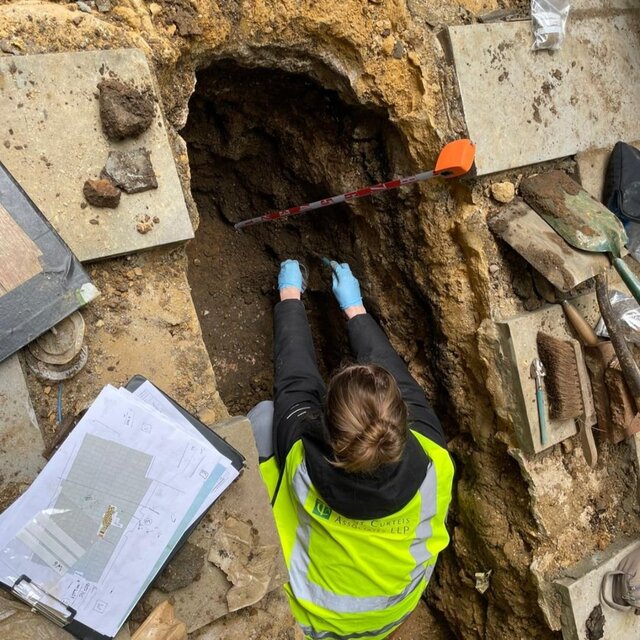
As time passed, the mosaic became a forgotten relic, its location merely noted on plans. Little did anyone know that the pavement they walked across was once a site for Roman artistic expression, awaiting a chance to be rediscovered.
Video
Watch this video to discover an extraordinary Roman mosaic and villa uncovered beneath a farmer’s field in Rutland, shedding light on ancient history.
Ongoing Excavation and Plans for Display

In March 2024, construction began on a new project aimed at permanently revealing this incredible mosaic. Located beneath a pavement in Red Lion Yard, adjacent to a vape shop, the mosaic is slowly being unearthed for all to see. So far, archaeologists have uncovered about a fifth of the total mosaic, including areas that weren’t revealed during the initial discovery in the late 1980s. The excavation is a meticulous process, with workers carefully removing the surrounding debris while ensuring that the delicate artwork is not damaged.
The plan is to showcase the mosaic beneath a protective glass structure, allowing visitors to experience the artistry and craftsmanship of the Roman period. Once the project is complete, likely by the summer of 2024, the public will have access to a one-of-a-kind piece of ancient history that was once lost to time.
Colchester’s Rich Roman Heritage
Colchester holds a special place in Britain’s Roman history. Situated approximately 60 miles northeast of London, the town was the first Roman capital of England and one of the oldest recorded towns in Britain. Colchester’s importance during Roman times cannot be overstated, and the rediscovery of the mosaic highlights the town’s unique connection to the empire.
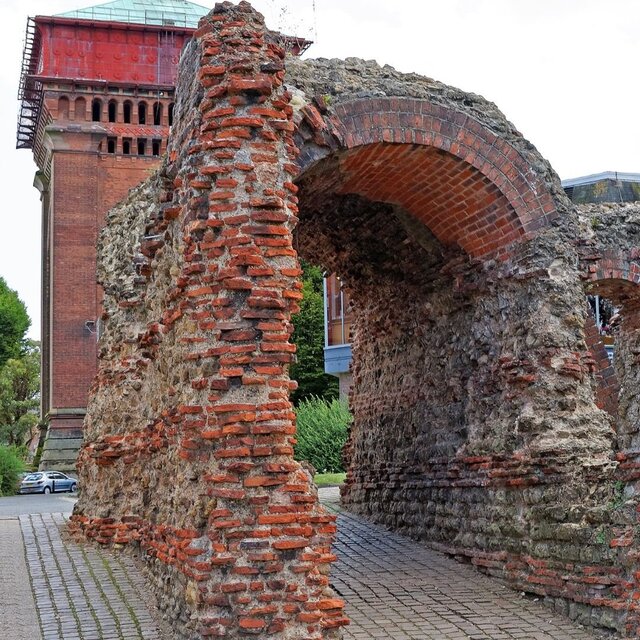

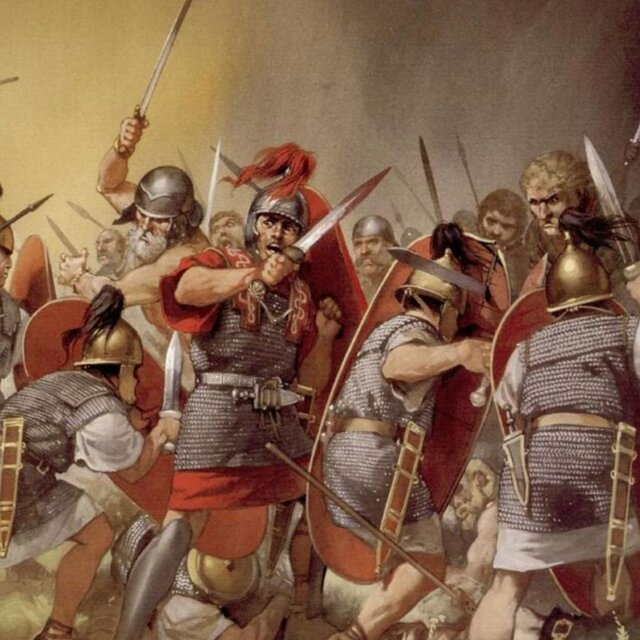

Beyond the mosaic, Colchester is home to numerous other Roman structures and archaeological sites, including the iconic Balkerne Gate, the largest surviving gateway in Roman Britain. This impressive monument served as the main entrance into the walled Roman town and remains a testament to the grandeur of Roman engineering.
Colchester’s Roman town walls are another significant feature, with parts of them still standing today. As one of the earliest examples of defensive structures in Britain, these walls have endured for nearly two millennia.
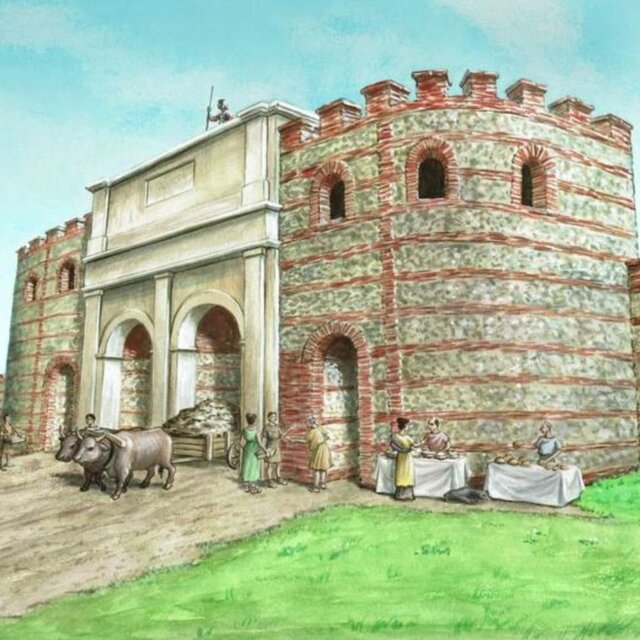
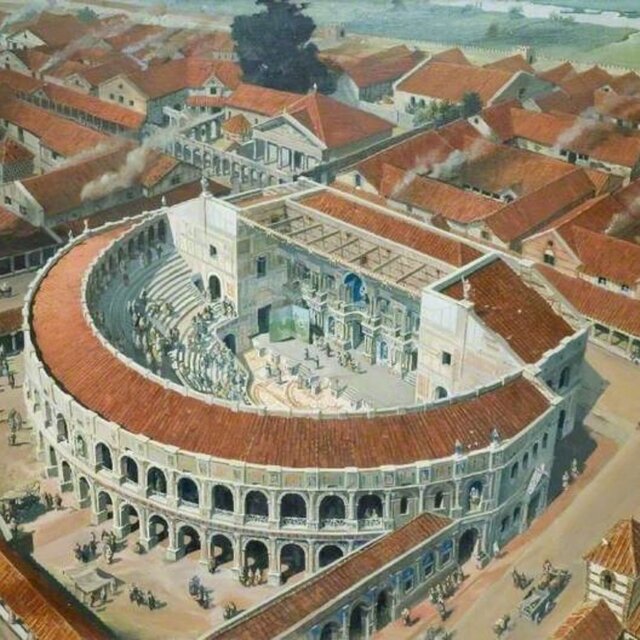
However, despite the wealth of Roman heritage in the area, Colchester’s rich history is often overshadowed by other more well-known sites. The unveiling of the mosaic serves as a reminder of the town’s importance in Britain’s Roman past and the need for greater recognition of Colchester’s contributions to the empire.
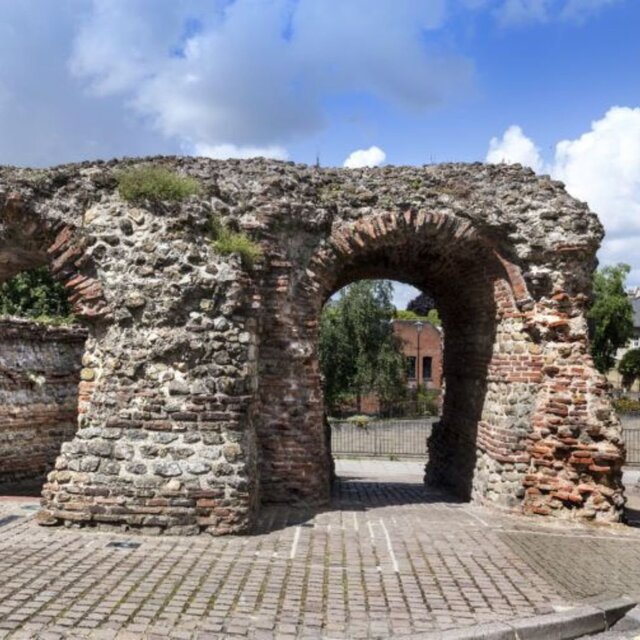
The Cultural and Artistic Importance of Roman Mosaics
Roman mosaics were not just decorative elements; they held cultural, religious, and social significance. These intricate works of art were often used to adorn public spaces, private homes, and religious temples. The mosaics were a way for the Romans to display their wealth, craftsmanship, and appreciation for artistic beauty.
The Colchester mosaic is no exception. While we have only uncovered a portion of it so far, the details already revealed suggest that it was a sophisticated work of art. Roman mosaics were typically made from small, colored tiles known as tesserae, arranged in elaborate patterns and designs. The Colchester mosaic likely depicted scenes from daily life, mythology, or important cultural symbols, providing a glimpse into the aesthetics and values of the time.
Mosaics also held a significant role in Roman religion, often found in temples and other sacred spaces. As a reflection of the divine, the act of commissioning and creating mosaics was not just a matter of artistic expression but also a demonstration of piety and respect for the gods.

The Role of the Colchester Archaeological Trust
The successful uncovering of the Colchester mosaic is largely due to the efforts of the Colchester Archaeological Trust. Led by Philip Crummy, the Trust has dedicated years of research and excavation to the preservation of Colchester’s Roman heritage. Crummy, who has been working in the field of archaeology for decades, emphasized the significance of permanently exposing the mosaic, stating that it was an opportunity to connect the present with the past in a meaningful way.
In an interview with the BBC, Crummy explained the importance of Roman mosaics to the local community, noting that Colchester is home to more mosaics than any other Roman town in Britain. He hopes that the permanent display of the Colchester mosaic will attract attention to the town’s remarkable Roman heritage and foster a deeper appreciation for its historical significance.
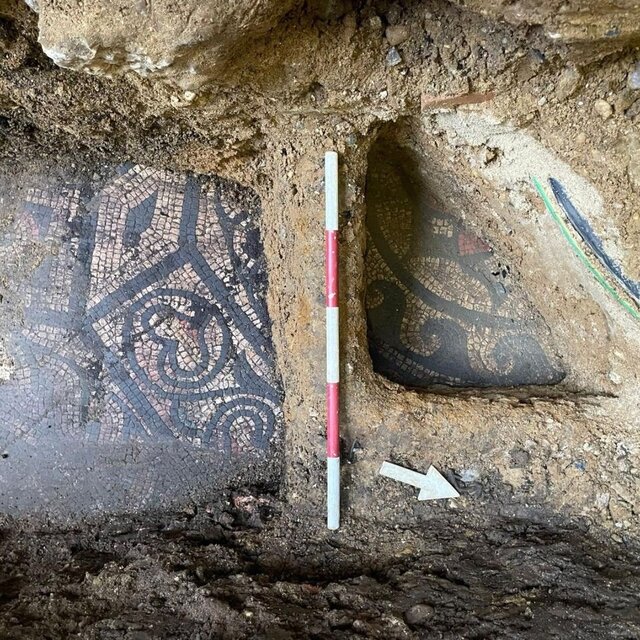
The Public’s Opportunity to Experience Roman Britain
The Colchester mosaic represents more than just a beautiful piece of ancient artwork. It is a tangible connection to Britain’s Roman past, offering a rare opportunity for the public to engage with history in a way that is both educational and awe-inspiring. By unveiling this masterpiece, the project brings Colchester’s rich Roman heritage to the forefront, allowing visitors to step into the world of the Romans and experience their artistry firsthand.
The mosaic’s display beneath glass will offer protection while providing an unobstructed view of the intricate designs. For those who may have never considered the depths of Roman influence in Britain, this rediscovery serves as a powerful reminder of the empire’s far-reaching impact and the lasting legacy it has left on the British landscape.
Video
Tune into this video from Time Team on Odyssey to uncover the priceless Roman mosaics buried beneath a field in Somerset, revealing a hidden piece of history.
Conclusion
The Roman mosaic in Colchester is more than just a piece of ancient art; it is a window into the cultural, religious, and artistic traditions of the Roman Empire. Its rediscovery after more than 30 years of obscurity is a testament to the perseverance of archaeologists and the value of preserving history. As the excavation continues and the mosaic is prepared for public display, it offers a rare glimpse into a long-lost world.
Colchester’s role as the first Roman capital of Britain is solidified once again, and the town’s remarkable history is finally being brought into the spotlight. For all who visit, this mosaic will serve as a lasting reminder of Britain’s deep and enduring connection to its Roman past.
